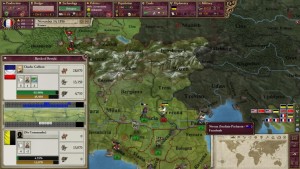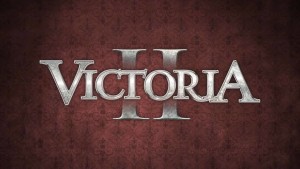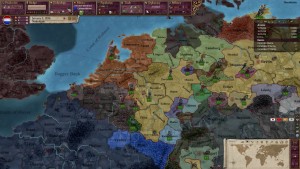OverviewVictoria 2 is a semi-real-time strategy game that models the entire world from 1836 to 1936. The focus is on political and economic management, as you'll have to manage the rise of liberalism, the surge of industrialization, and the relatively new idea of a world market. While secondary powers struggle to make a name for themselves, world leaders scramble for Africa and international prestige. Victoria 2 is the sequel to Paradox Interactive's Victoria, the grand strategy game that took players through the second industrial revolution and the height of the British Empire.The WorldThe look of the political mapThe game is powered by the Hearts of Iron 3 branch of the Clausewitz Engine, the engine developed and used by Paradox Interactive in Europa Universalis III and all of their games since. The graphical look of the game map presents almost a painterly appearance in terrain mode, and in political map mode gives off the look of a faded paper map.The world in Victoria 2 is divided into states which function as units of industry, as well as bargaining chips in war. States are then divided into provinces, which are used for maneuvering armies and improving infrastructure. Provinces also hold POPs, the abstracted citizens of your nation. The POPs are the driving force behind your country, they work fields, work in factories, and contribute to your military ranks. The various types of POPs are as follows:Farmers: They work the farms and harvest all the natural resources that can be grown, such as Grain and FruitLaborers: They work in mines or quarries and harvest the other half of the natural resources, such as Iron, Coal, or Timber.Craftsmen: They are your low-grade factory workers. All factories require Craftsmen.Clerks: They are your high-grade factory workers. All factories require Clerks, but need a fewer amount than Craftsmen.Artisans: Enterprising goods manufacturers. They can produce any goods Factories can produce, but in smaller quantities. Large numbers of Artisans represent pre-industrial cottage economies.Clergymen: The religious leaders, they lower the political awareness of the population and also serve as your country's educators.Bureaucrats: The administrative backbone of your nation, they raise the administrative efficiency of states they inhabit, increasing tax income.Aristocrats: The landed elite of society, they increase the output of natural resources in the states they inhabit.Capitalists: The enterprising elite, they build factories, and raise the effectiveness of said factories in the state they inhabit.POPs will move between positions if they see opportunities for a better life, or fall victim to poverty. They will also move between provinces or between nations if they grow discontent with their lot in life.PoliticsPolitical management screenIn Victoria 2's time frame, the world was in chaos. From the Liberal Revolution, to the massive power struggle over control of Central Europe, to the American Civil War, to eventually World War I. With the world in such chaos, simulating the climate in game form is an incredibly tricky task. Victoria 2 sets out to do this in several ways.First of all is the POP system, each POP has values that represents their "Consciousness", or their awareness of the happenings within their country and the effect it has on them, and their "Militancy", their willingness to take up arms and stage a revolt over their beliefs. For example, as Europe industrializes, the increasing middle class becomes more aware and sees that their monarchical forms of government don't provide the rights they desire. This leads to them swaying towards the liberal political bias, and their militancy increases rapidly. The old school conservative monarchies of Europe will either have to give in to demands or risk further revolt. The historical example of this is the Liberal Revolution.Victoria 2 uses a "Spheres of Influence" system used previously in Europa Universalis III: Heir to the Throne. The top 8 rated nations in the world, the so-called "Great Powers" have the ability to expand their spheres of influence over the lesser nations of the world. For example, Prussia starts with most of northern Germany in their Sphere of Influence, while Austria will start with southern Germany in their Sphere, and if either wants to fully form Germany as a whole, they'll have to gain the rest of the minor German nations in their spheres. This can lead to military conflict, such as the historical Austro-Prussian War. Great Powers can ban embassies and discredit their enemies while nurturing relations with secondary powers to expand their influence.Depending on the amount of freedom you give your people, you may have to deal with elections in your nation. The will of the (voting) people determines the ruling party of your government, which places various restrictions on your ability to direct the economy and industry. A pacifist party will not allow you to fund your military at 100% while a communist party will not allow you to lower taxes beyond a certain point. Each party has a viewpoint on trade, economy, religion, citizenship and war.EconomicsKeep your nation in the blackAt 1836, the game's start date, much of the world was still based on smaller decentralized "Cottage Economies", where independently owned and operated workshops and small factories produced most of a nation's goods. In Victoria 2, your capitalists and clerks are the main force behind your growing economy. Your clerks will research technologies such as Steam Power, moving your nation through the Second Industrial Revolution, and your Capitalists will build the factories based on this technology. Capitalists in each state will take into account the profitability of each potential producible good and will dynamically build factories based on this information.The price of these goods are determined by the "World Market." The game employs a supply and demand model that constantly effects the prices of goods. Factories have to buy input goods from this World Market, and then they sell the subsequent output goods on the Market. Players can also buy goods themselves for the purposes of infrastructure enhancement or army building.ColonizationColonization in Victoria 2 is measured by life rating and naval distance. The lower the life rating of a state, the greater the technology is needed to overcome this. Prophylaxis against malaria for example opens up colonization opportunities. Distance is solved by establishing strategic naval bases throughout the world to provide a base of operations. Establishing military presence is never a requirement for creating a colony although it does help and can provide an edge when competing with other nations in a land grab. Only great and secondary powers may participate in colonization.WarfareWhen words fail, conflict is always an option. Declarations of war can't be made lightly as unprovoked aggression will draw the attention of other nations and unsuccessful campaigns will anger your own citizens. Victoria 2 expands on the idea of "Casus Belli" from Heir to the Throne, with the option to add war goals during the conflict beyond the original reason for war. Combat is tied to the POP system as you can only recruit as many divisions as your population of soldiers will allow. Heavy losses sustained in battle are reflected in a loss of population. In emergencies, a nation may mobilize its civilians into combat. However, while farmers are holding guns they aren't tilling fields and your economy will suffer, especially if they don't come home.A House DividedThe first expansion for Victoria 2 was released February 2, 2012 and focuses on the American civil war. The name for the expansion comes from Abraham Lincolns speech about the American Civil war. Some new features are:New starting point in 1861, allowing players to experience the US Civil War from the startManufacture reasons to go to war with other countries, all in the name of the great game of powerCivilize your country with various new reform paths to ultimately become equal with the western nationsInvest in building infrastructure and factories in other countries to strengthen their ties to youDeeper political system with new national focus options and new types of reformsA new system of popular movements that can be appeased or suppressed, but if ignored, will become the revolutionaries of tomorrowImproved interface, with more information easily available and improving gameplay.China is now divided into cliques, allowing for more interaction in the Far East.New starting point in 1861, allowing players to experience the US Civil War from the startManufacture reasons to go to war with other countries, all in the name of the great game of powerCivilize your country with various new reform paths to ultimately become equal with the western nationsInvest in building infrastructure and factories in other countries to strengthen their ties to youDeeper political system with new national focus options and new types of reformsA new system of popular movements that can be appeased or suppressed, but if ignored, will become the revolutionaries of tomorrowImproved interface, with more information easily available and improving gameplay.China is now divided into cliques, allowing for more interaction in the Far East.Developer Diaries can be read here for more info about the expansionHeart of DarknessThe second expansion for Victoria II was released on April 16, 2013, and is focused on the colonization aspect of the game; most specifically the Scramble for Africa. Colonization is now done through the Colonial Power system which gives points for research, number of naval bases in core provinces, and number of combat ships in your navy. This means that a nation that can afford a strong and up-to-date navy will have a leg up in colonizing. It also improves the naval warfare system with different ship types now having different gun ranges. It also adds international crises, which minor and secondary powers can use to call on Great Powers to support them in their local conflicts. Crises arise from rising tension in flashpoint provinces. Once tension has risen to a certain level a crisis will begin, each side is backed by a Great Power who attempt to use diplomacy end the crisis or woo other interested Great Powers into picking a side. If a diplomatic solution can not be found then war begins. Competing colonial powers can also use the crisis system against one another, creating crises in provinces where both have colonial interests. The expansion also includes a new newspaper system, where important news from around the world is shown.DLCInterwar SpritepackInterwar Artillery SpritepackInterwar Planes SpritepackInterwar Engineer UnitInterwar Cavalry Unit PackAmerican Civil War SpritepackSongs of the Civil WarGerman Unit Pack System













